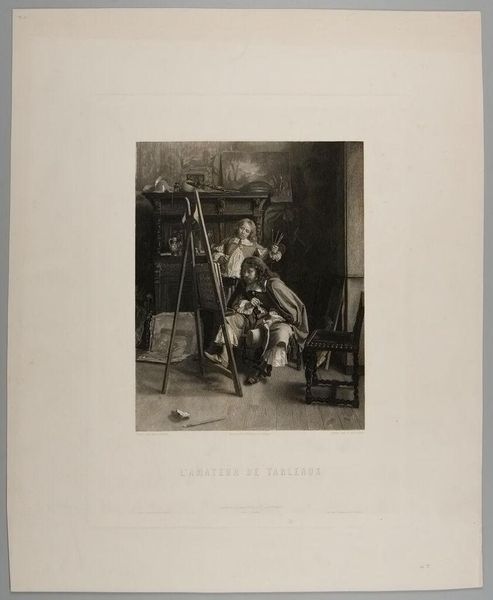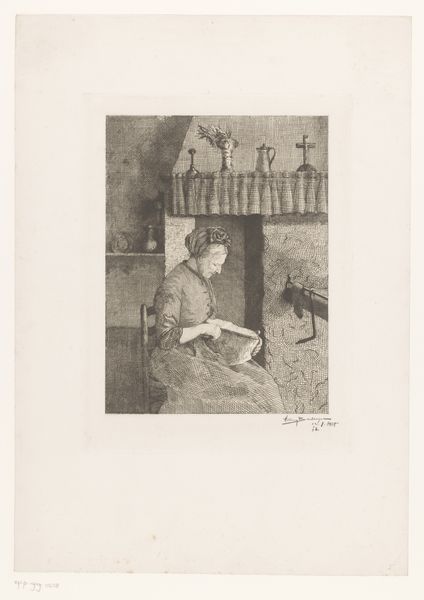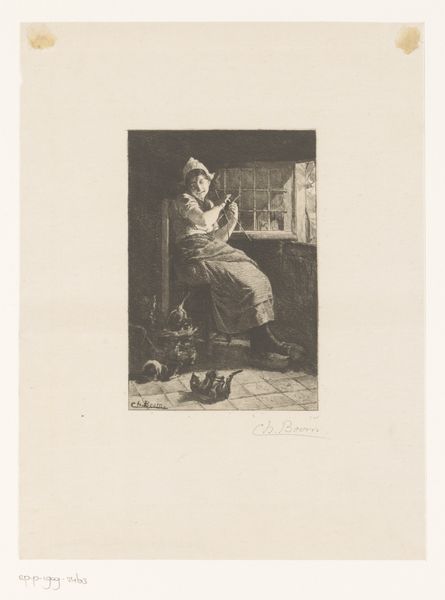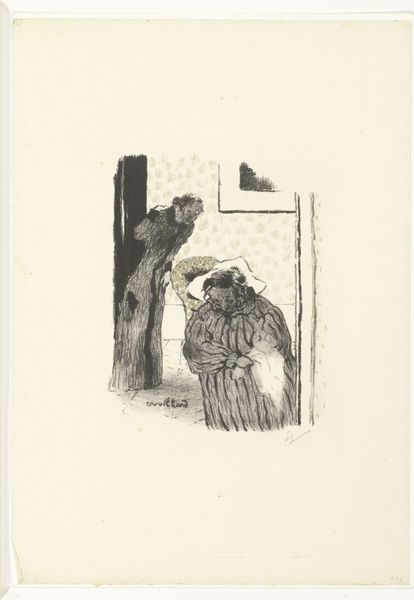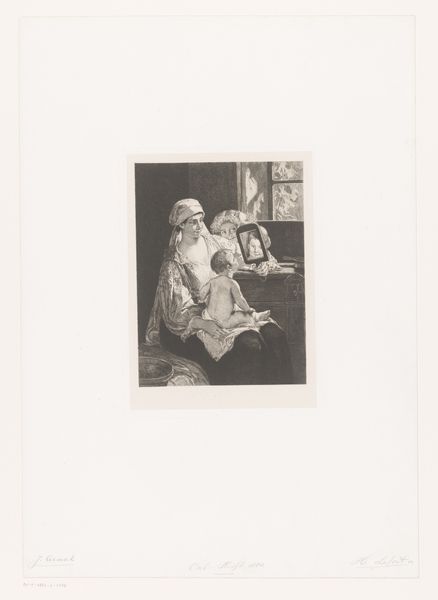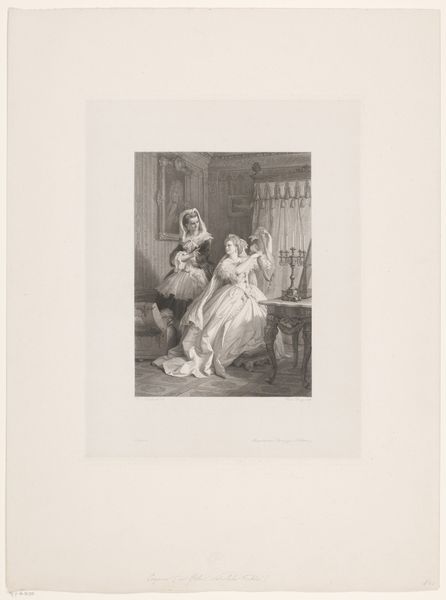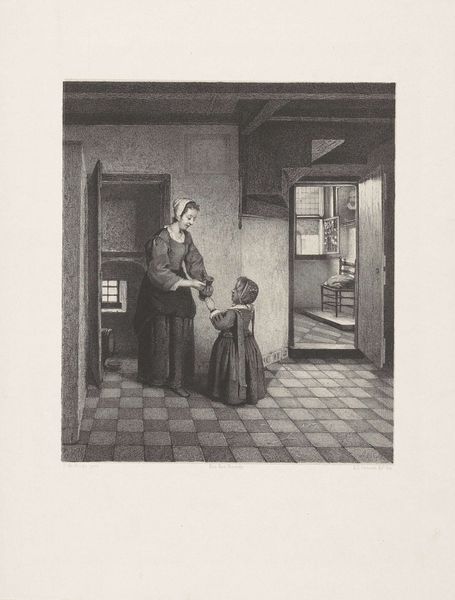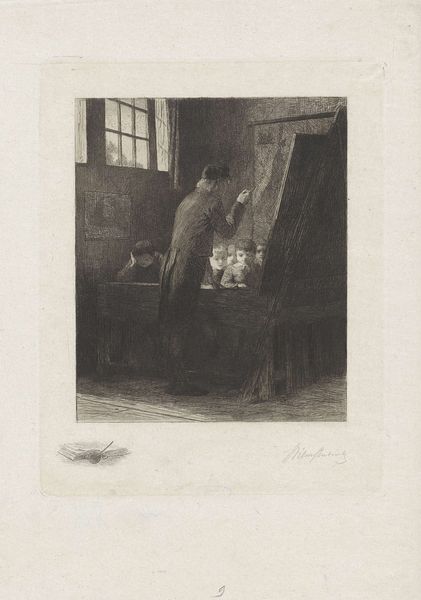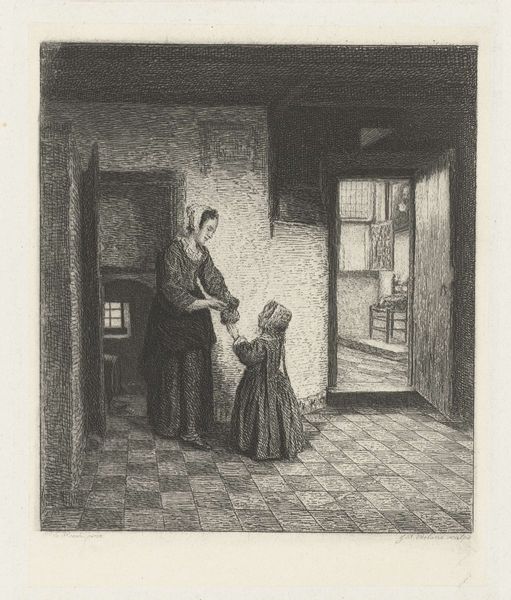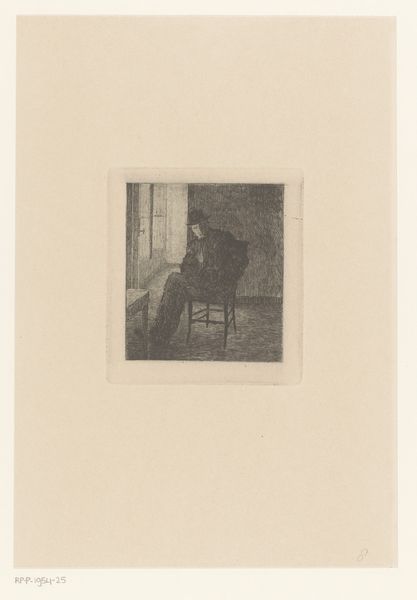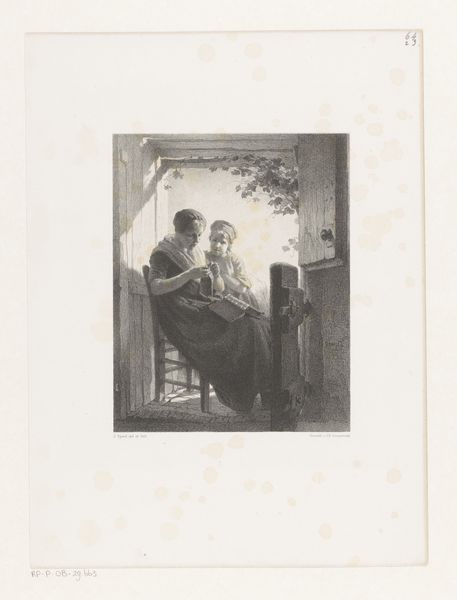
drawing, print, paper, engraving
#
portrait
#
drawing
# print
#
paper
#
pencil drawing
#
genre-painting
#
academic-art
#
engraving
#
realism
Dimensions: 6 x 5 1/4 in. (15.24 x 13.34 cm) (image)11 3/16 x 8 1/8 in. (28.42 x 20.64 cm) (sheet)
Copyright: No Copyright - United States
Curator: Here we have Timothy Cole’s "Woman Standing at a Spinet," created in 1895. It's a print, meticulously crafted on paper using engraving techniques. The piece resides here at the Minneapolis Institute of Art. Editor: The light! It feels like Vermeer’s "Girl with a Pearl Earring" took a somber turn and decided to dabble in chiaroscuro at dusk. There’s something incredibly still, almost melancholic, about this image. Curator: It's interesting that you pick up on that melancholy. As an engraving, consider the laborious process, the artist's hand carving every single line into a metal plate. This wasn't just a reproduction; Cole imbued it with his own artistic interpretation. Each of those etched lines speaks to a commitment, almost an obsession. Editor: Absolutely. And seeing the composition and this kind of work within a tradition dominated by painting begs the question: what’s lost, and what’s gained, when you translate a scene into such a rigid material process? The subject, after all, is one of leisure, of genteel accomplishment; that contrast sings out to me. I see paper not only as material but as a valuable commodity and indicator of education for some members of that social period. Curator: It makes one wonder about the act of viewing too. Is Cole making us contemplate female agency during this historical period? Is it a social statement? Editor: Perhaps! The artist might want to offer visual notes on gender identity, class dynamics, production—and, more intriguingly, consumption. I am pretty curious if Cole knew more about this character to offer clues to this scene. Curator: I love how a work so seemingly simple can open into a world of contemplation about who made this object. Well, what a harmonious note to end our observation on, wouldn't you agree? Editor: Precisely, a brief interlude sparking broader thoughts on history and our place in the narrative!
Comments
No comments
Be the first to comment and join the conversation on the ultimate creative platform.

